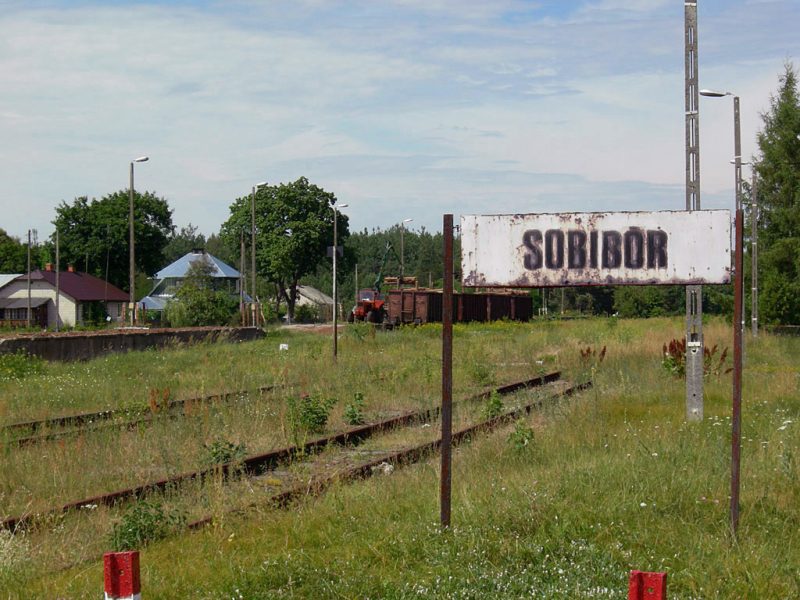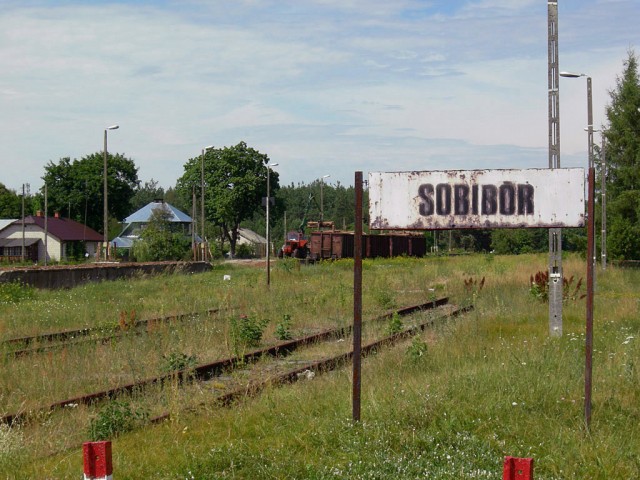Authorities plan to construct a visitor’s center and other buildings in the epicenter of where 250,000 Jews were slaughtered in Sobibor, a former death camp in Poland.
The construction is to begin next year and it was approved by an international committee which includes representatives from Israel’s Yad Vashem. The project is estimated to cost $5 million and is to make Sobibor one of the last extermination camps to include a tourist infrastructure.
Selma Engel, one of seven remaining survivors of Sobibor who was able to escape from the camp in 1943 when the prisoners revolted. 300 Jewish prisoners fled into the forest after all of the SS masters were killed by the prisoners. However, only 50 escapees survived.
Engle held an interview with the Times of Israel and she stated that she was glad that something was being done at the camp. She tells that no one knew about Sobibor and the horrors that was going on inside of the camp.
Unfortunately, not everyone shares the same sentiments as Ms. Engel. Even the archeologists who have excavated at the camp since 2007. In their mind, the site’s historical integrity and the future prospects will be more beneficial if the buildings were outside of the camp, not perched on top of Holocaust-era remains.
Yoram Haimi, an Israeli archeologist, believes that the building should be off the camp. Not only is the building being built on the site, but there is a long wall being built too.
Breaking Ground
In 2006, Haimi learned that two of his uncles were executed at Sobibor. Within a year, the researched arrived on-site at the extermination camp. He was joined by Wojtek Mazurek, a Polish archeologist.
For seven years, the pair have discovered thousands of personal effects that belonged to the Jewish victims. They remapped key locations of the camp by unearthing fences, buildings, and what is believed to be an escape tunnel.
The future visitor center is going to be built in Camp 2. Camp 2 is where the victims undressed and gave up their personal valuables before they were sent down the “Road to Heaven,” a pathway that lead toward the gas chambers.
The path was once camouflaged and surrounded by barbed wire. The two archaeologists discovered the path during earlier excavations and ended a decades-long debate about the exact location.
In the end of 2013, archaeologists uncovered a metal nameplate that belonged to Ms. Annie Kapper—a Jewish girl from Amsterdam who was murdered, and a shovel.

The newest excavation produced several complete skeletons—perhaps they were Poles who were killed by Soviet soldiers. They also uncovered open air cremation pits that were close to mass graves which the total of mass graves to nine.
Haimi shared a grizzly detail of the odor of being so close to the pits. He recalls that they could still smell the decaying fluids of all the dead bodies when they excavated near the mass graves—even 70 years later.
While Hami and Mazurek excavated at Sobibor, the Polish-German Reconciliation Foundation began fundraising attempts for the visitor center. In 1991, the foundation was created to assist Nazi victims and promote dialogue, the foundation was able to distribute over a billion dollars to 700,000 victims—including funding several projects like Sobibor.
The Polish government’s Sobibor committee included representatives from Israel, the Netherlands and the Slovak Republic. Working closely with the foundation, committee unanimously voted to construct a visitors center in 2012. Along with the visitors center, a museum and a new memorial structure will be erected. The Majdanek State Museum, which oversees activities the activities of the Majdanek and Belzec ex-death camps, were asked to supervise the Sobibor project.
The deputy minister praised the committee for funding for over half a decade of excavations in Sobibor. The project was noted to be “unprecedented scope and scale.”
The design of the visitor’s center was chosen through an international architectural competition which was held last year. The one-story building was chose from 63 other submissions and it will include close to 10,000 square feet of exhibition halls, classrooms, and a cafeteria.
The plans for the project call for a memorial wall which will be an estimated mile long. It will run between the visitor center and the mass graves, parallel to the “Road to Heaven.” The wall will be inscribed with information regarding the camp and it will circle the graves and the “ash mountain” memorial.

Conflicting Interests
Some Holocaust educators felt that the plans for the camp was long overdue and were welcomed. For decades, Sobibor was the least visited of the former camps, partially because of its remote location and the lack of tourist facilities.
In a response to the archeologists’ concern about building on the Sobibor grounds, the deputy minister, Zuchowski said there was extensive researched conducted at the proposed site. He stated that it is not acceptable to have a permanent archeological zone in an area of eternal rest and the place was much like a cemetery.
When the construction is set to begin next year, archeologists will be close by to supervise and halt construction to retrieve artifacts as permitted by Polish law.
For six years the University of Hartford produced the “Sobibor Documentation Project” which was continual recordings from each excavation season. The documentary film about the digs is called “Deadly Deception at Sobibor,” and is in post-production.
The question of building inside the camp revolves around conflicted interests. This includes the pull between historical and commemorative motives, a professor of Judaic studies, James Young, states. Young is an author of several books about the memory of the Holocaust.
Those who visit Sobibor will experience what Young has called a collapse between forensics and memory.

